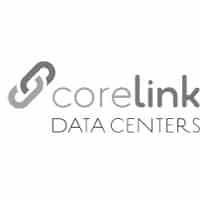When the true impact of the COVID-19 pandemic set in, there was little anyone could do to prepare for how it would affect the world’s economy. Every single industry has been impacted and, if there is one thing that must be protected during such a fragile time, it is mission-critical facility operations. A “mission-critical” facility can be loosely described as any facility that, if operations are interrupted, it would negatively impact business operations and potentially cause significant damage to the business including financial loss and, in worst-case scenarios, the loss of a life or multiple lives. There are many different types of mission-critical facilities all over the world including data centers, hospitals, healthcare facilities, military and government operations, laboratories, and more.
 We have seen how rapidly and ruthlessly COVID-19 has spread internationally and with such an infectious virus there has naturally been a dramatic rise in the demand on mission-critical facilities. For example, if mission-critical facility infrastructure is overwhelmed by demand in a hospital, there could be a power outage or information system failure, both of which could lead to patients experiencing distress or even death. Therefore, it is imperative that mission-critical facilities take what we have learned from the last few months during this worldwide pandemic and prepare for possible resurgences or other disaster scenarios that could arise in the future to ensure business operations and, most importantly, lives are protected.
We have seen how rapidly and ruthlessly COVID-19 has spread internationally and with such an infectious virus there has naturally been a dramatic rise in the demand on mission-critical facilities. For example, if mission-critical facility infrastructure is overwhelmed by demand in a hospital, there could be a power outage or information system failure, both of which could lead to patients experiencing distress or even death. Therefore, it is imperative that mission-critical facilities take what we have learned from the last few months during this worldwide pandemic and prepare for possible resurgences or other disaster scenarios that could arise in the future to ensure business operations and, most importantly, lives are protected.
Minimizing Risk of Outages or Interruptions in Mission-critical Facilities During a Disaster: Staffing Strategies
While the risk of mission-critical facility infrastructure failure cannot be completely eliminated, there are many different strategies that can be implemented to minimize the risk. The first step in minimizing risk in mission-critical facilities during a pandemic or other disaster is to secure adequate and effective staffing. This may have not seemed like a problem in the past but with the high rate of infection and need to quarantine that the world has experienced we have seen that having adequate staffing while also maximizing safety can be challenging in any workplace, and mission-critical facilities are no exception.
Remote monitoring is not new to the data center and mission-critical facility sectors but it may not have been completely commonplace in each facility prior to the COVID-19 pandemic. That has likely changed, and very quickly, for most facilities. Remote monitoring and other remote work can and should be leveraged to the fullest capacity whenever possible to protect the safety of staff without sacrificing functionality and uptime. It is important to re-evaluate what systems and infrastructure require in-person staff and what can be moved to remote control and monitoring. This is an ideal time to reevaluate your infrastructure management plan and see if any outdated infrastructure needs to be replaced so that your facility can move into a new era of a technology that it likely would have needed to adopt within the next few years anyway. Anything that can be remotely monitored or controlled, should be, if the resources are available.
In addition to remote monitoring and remote work, rotating shifts can be utilized to reduce the risk of infection. By forming shift groups and keeping them together for all shifts, when possible, the risk of an entire office becoming infected and potentially very ill is reduced. This ensures coverage of your mission-critical facility because it is good for not only the health and safety of the staff but also reduces the risk that there would suddenly be no one available to run a mission-critical facility due to illness. In addition to rotating shifts, it is a good idea to restrict access even more tightly to your mission-critical facility. Nobody should be there that does not absolutely have to be to further reduce the risk of infection.
Minimizing Risk of Outages or Interruptions in Mission-critical Facilities During a Disaster: Operational Strategies
 While we know that increasing remote work and monitoring can help tremendously during a pandemic, we know that most mission-critical facilities cannot transfer all operations to remote work – 100% remote is simply not possible due to the significant infrastructure required to support many mission-critical facilities, as Mission Critical Facilities points out, “Beyond the uniquely obvious and nontransferrable capabilities of the facilities themselves — grid access, raw compute power, failover, security, etc. — there is the very real accountability associated with the sheer volume and type of workloads managed within them. Regulatory constraints around how incalculably vital data must be managed and protected throughout all phases of its lifecycle add even more complexity to data center protocols during a pandemic. They go on to explain two of the major operational concerns for mission-critical facilities during an emergency – connectivity and security, “This issue relates directly to capacity management, and, as the crisis deepens, the strain on all aspects of infrastructure will only increase. Diversify your upstream providers as much as possible to mitigate the risks associated with any one of them being compromised by pandemic-related resourcing constraints. This minimizes the potential for back-end interruptions to reach your customers…From a cybercriminal’s perspective, why attack one company and net only one victim when you can attack a mission-critical data center and compromise many victims? This sobering reality reinforces the need to nail down end-to-end security protocols with all vendors, including, but not limited to, encryption, authentication, and on-site access control.”
While we know that increasing remote work and monitoring can help tremendously during a pandemic, we know that most mission-critical facilities cannot transfer all operations to remote work – 100% remote is simply not possible due to the significant infrastructure required to support many mission-critical facilities, as Mission Critical Facilities points out, “Beyond the uniquely obvious and nontransferrable capabilities of the facilities themselves — grid access, raw compute power, failover, security, etc. — there is the very real accountability associated with the sheer volume and type of workloads managed within them. Regulatory constraints around how incalculably vital data must be managed and protected throughout all phases of its lifecycle add even more complexity to data center protocols during a pandemic. They go on to explain two of the major operational concerns for mission-critical facilities during an emergency – connectivity and security, “This issue relates directly to capacity management, and, as the crisis deepens, the strain on all aspects of infrastructure will only increase. Diversify your upstream providers as much as possible to mitigate the risks associated with any one of them being compromised by pandemic-related resourcing constraints. This minimizes the potential for back-end interruptions to reach your customers…From a cybercriminal’s perspective, why attack one company and net only one victim when you can attack a mission-critical data center and compromise many victims? This sobering reality reinforces the need to nail down end-to-end security protocols with all vendors, including, but not limited to, encryption, authentication, and on-site access control.”
Operationally speaking, the more that can be automated, including standard maintenance, the better because it reduces the amount of staff needed to be on-site at any given point in the day. We know that there is a high chance of COVID-19 resurgence which could lead to enhanced social distancing protocols or even additional time being quarantined. While the COVID-19 pandemic is an unwanted disaster, it will drive the need for innovation and likely lead to significant advancements in mission-critical facility operational strategies, infrastructure, software and more. An investment now in necessary infrastructure and operational updates is imperative because it will ready a mission-critical facility for future worst-case scenarios while enabling them to be industry leaders even if we are no longer in a pandemic.




























